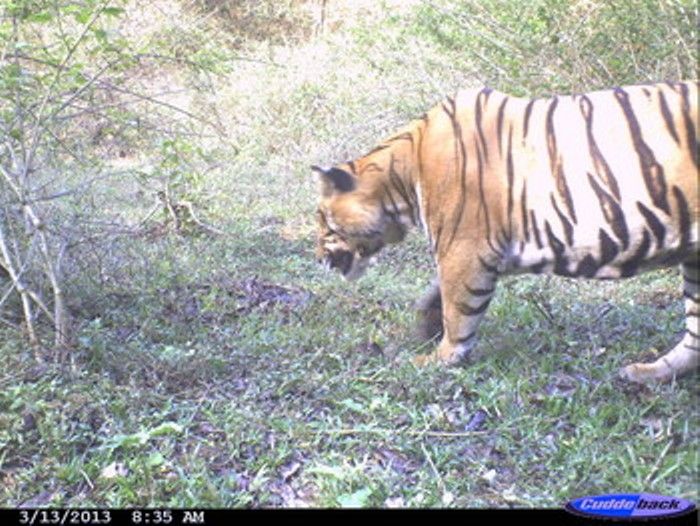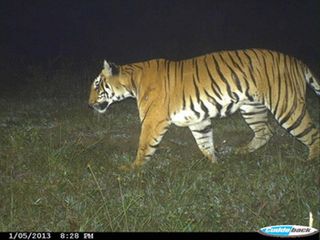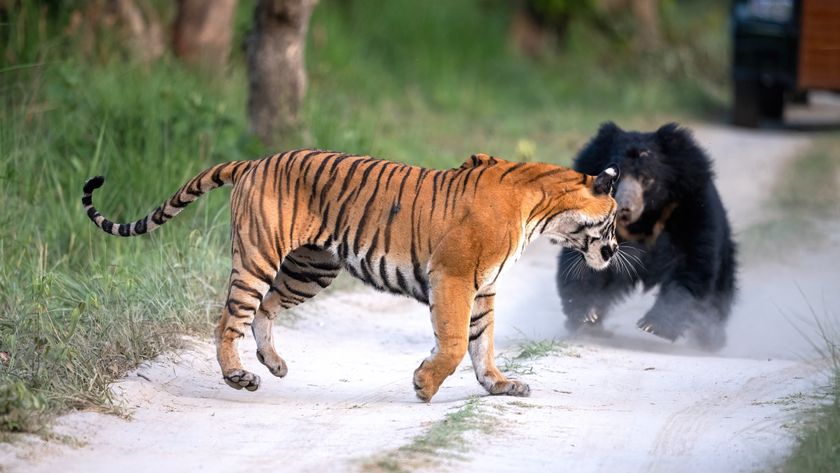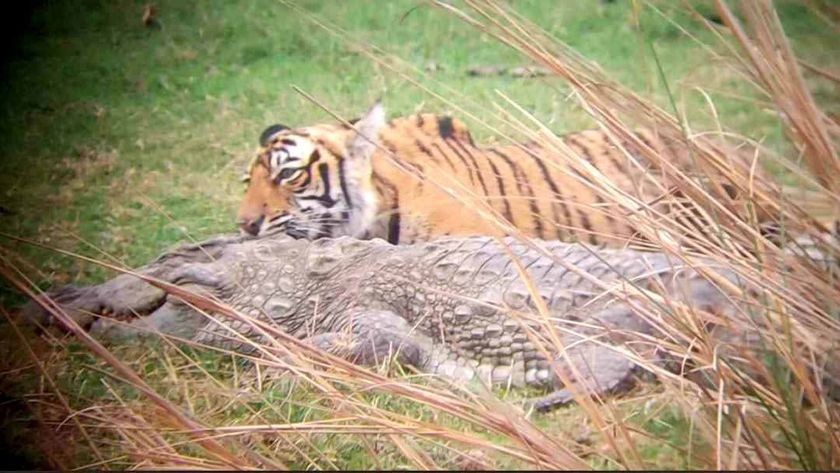
Cameras Capture Tigers Trekking Through Wildlife Corridor

A camera trap has captured photos of two healthy tigers using a protected corridor in the Kerala province of southwest India this year, evidence that the pathway could help populations of the endangered animals.
The first photo shows an adult male tiger in very good health that has just preyed upon a gaur, also known as an Indian bison, according to a release from the World Land Trust, which funded the creation of the protected area. The camera trap spotted another adult tiger, also in good health, earlier in the year.
The corridor, which is about 4 miles (6 kilometers) long and connects two adjacent wildlife reserves, was originally created to allowelephants to move between the parks. Indeed, elephants have been spotted moving through the area, as have sloth bears, leopards, barking deer and mongooses, according to the release.

"We are all very pleased to see the increased usage of the corridor by a wide range of animals, and capturing these tigers on film is very exciting," said Sandeep Kr. Tiwari, deputy director at Wildlife Trust of India.
The Thirunelli-Kudrakote corridor, as it's called, runs through a global hotspot of diversity, the World Land Trust reports. India's largest elephant population calls the corridor home, as do 10 native mammal species (including the Salim Ali's fruit bat and the Nilgiri tahr, a type of goat) and 13 endemic bird species, like the Malabar parakeet.
Email Douglas Main or follow him @Douglas_Main. Follow us @OAPlanet, Facebook or Google+. Original article on LiveScience's OurAmazingPlanet.
Sign up for the Live Science daily newsletter now
Get the world’s most fascinating discoveries delivered straight to your inbox.












